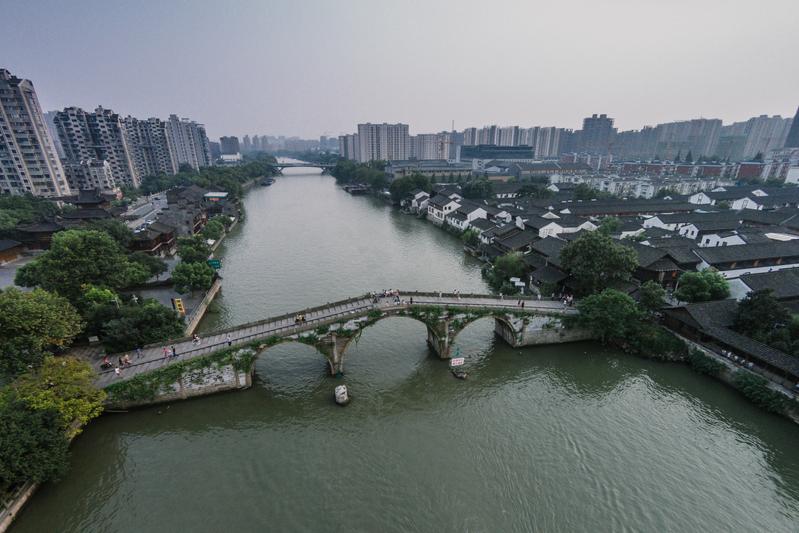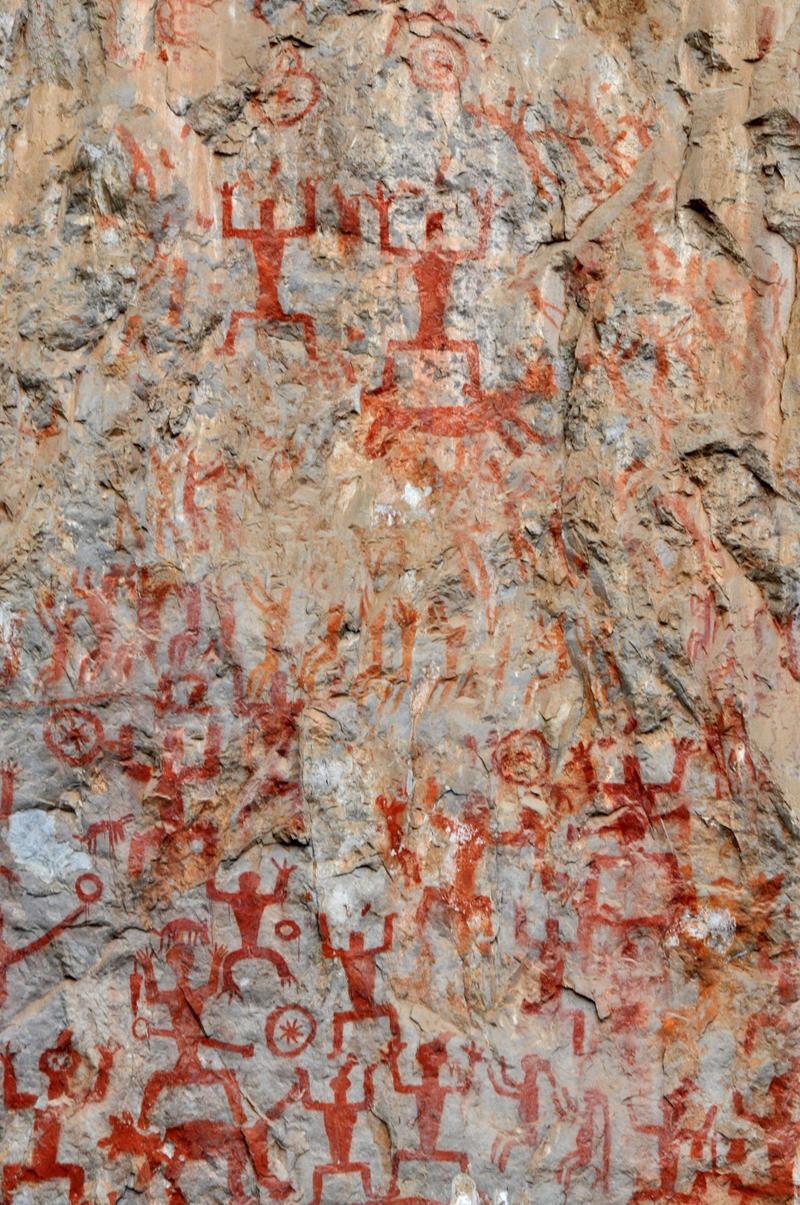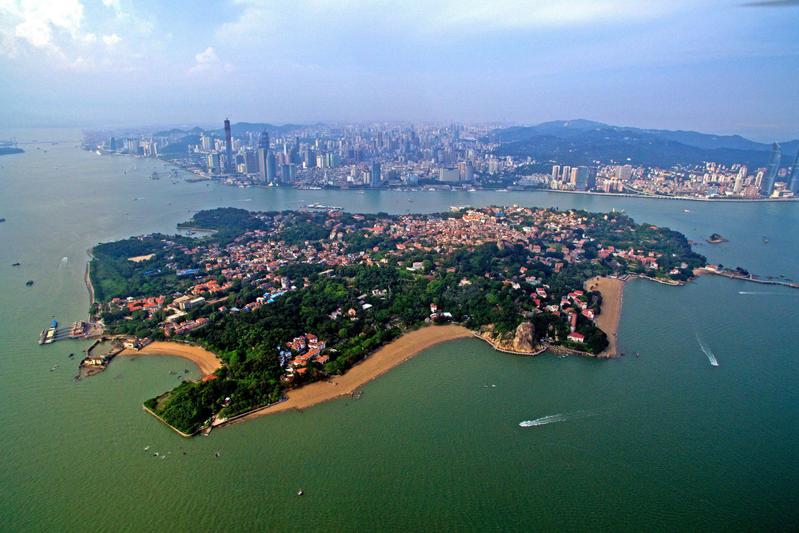Inclusion of Quanzhou as a UNESCO World Heritage Site shows China's long, concerted efforts in cultural conservation, Wang Kaihao reports.
 A view of the Grand Canal in Hangzhou, Zh日
A view of the Grand Canal in Hangzhou, Zh日
Quanzhou has been added to the UNESCO World Heritage List, marking the end of a long-awaited process. Preparation of the city's bid for World Heritage status was launched in 2001.
Talking about the selection process of World Heritage candidates in China, President Xi Jinping said in 2016 that the work should highlight the historical and cultural values of Chinese civilization, reflect Chinese people's spiritual pursuit, and show a complete and real image of China in both ancient and modern times to the rest of the world.
With the inscription of "Quanzhou: Emporium of the World in Song-Yuan China", China now has 56 UNESCO World Heritage sites, of which 38 are cultural, 14 natural and four a mix of cultural and natural sites-higher than most other countries in each category.
Chinese conservators and scholars say the priority is not to pursue numbers, but to comprehensively improve China's work in taking care of its heritage sites.
China joined the Convention Concerning the Protection of World Cultural and Natural Heritage in 1985, and, in recent years, the country has witnessed significant achievements in the area, especially since the 18th National Congress of the Communist Party of China in 2012. The importance of cultural heritage in the country's overall development has been emphasized by top leaders on various occasions.
"The heritage sites are physical evidence of the brilliance of Chinese civilization," said Zhang Lei, deputy director of the department in charge of World Heritage at the National Cultural Heritage Administration, during a news conference of the State Council Information Office earlier this month in Beijing.
"They bear the testimony of our cultural richness and the contribution of Chinese civilization to the world."
The Archaeological Ruins of Liangzhu City (listed in 2019) unveils a regional state and a civilization best known for its jade artifacts and water conservancy technology from 5,300 years ago.
 Zuojiang Huashan Rock Art Cultural Landscape in Chongzuo, Guangxi Zhuang autonomous region, a site added to the World Heritage List in 2016. (YU XIANGQUAN / FOR CHINA DAILY)
Zuojiang Huashan Rock Art Cultural Landscape in Chongzuo, Guangxi Zhuang autonomous region, a site added to the World Heritage List in 2016. (YU XIANGQUAN / FOR CHINA DAILY)
Separately, "Silk Roads: The Routes Network of Chang'an-Tianshan Corridor" (2014) and the Grand Canal (2014) indicate the communication and trade networks in ancient China, giving impetus to the development and prosperity of society.
The Cultural Landscape of Honghe Hani Rice Terraces (2013), Tusi Sites (2015) and Zuojiang Huashan Rock Art Cultural Landscape (2016) portray how different ethnic groups communicate with and influence each other to form a shared community of Chinese people.
"Kulangsu (Gulangyu Island), a Historic International Settlement" (2017) provides a unique example of cultural diversity on the southeastern coast of China, more recently, between the East and the West.
"The heritage sites span different phases of the development of Chinese civilization and speak to its outstanding achievements," Zhang said. "They show cultural inheritance …and the evolving wisdom in protecting ecology."
China's tentative list for future inscription on the list of World Heritage sites continues to reflect such a philosophy. For example, the Ancient Tea Plantations of Jingmai Mountain in Pu'er, which will be China's nomination for the World Heritage List in 2022, shows the cradle of tea culture and demonstrates agricultural technology, a belief system and people's care for the environment through the cultivation of tea, according to a proposal of the National Cultural Heritage Administration.
And, the 7.8-kilometer Central Axis of Beijing, which is likely to be nominated by China for the same list within the next decade, is also a reflection of Chinese core values, ranging from urban design, ritual system and pursuit of the harmony between people and their environment, Lyu Zhou, director of Tsinghua University National Heritage Center, said at a side event on conservation and sustainable development of historic urban landscapes held at the ongoing 44th Session of the World Heritage Committee in Fuzhou, capital of Fujian province.
"The effort of seeking World Heritage status is just a channel to enhance the protection of old cities, which is a challenge commonly faced across the world in urban development," Lyu said.
"Many of our experiences, including comprehensive conservation of cultural heritage sites, the timely drafting of plans and people-centric ideas (in site protection), can be referential for the international community."
 The site, "Kulangsu (Gulangyu Island), a Historic International Settlement", in Xiamen, Fujian province, declared a World Heritage Site in 2017. (WANG DONGMING / CHINA NEWS SERVICE)
The site, "Kulangsu (Gulangyu Island), a Historic International Settlement", in Xiamen, Fujian province, declared a World Heritage Site in 2017. (WANG DONGMING / CHINA NEWS SERVICE)
In China, there are about 70 local rules for the conservation of cultural heritage sites, and the central government has allocated over 600 million yuan (US$93 million) for the protection of World Heritage sites since 2012.
Some Chinese experiences have been shared further afield. In 2018, the 42nd Session of the World Heritage Committee recommended conservation of the Grand Canal as an example. Last week, the Great Wall was cited as another example of conservation at the committee's ongoing session.
Some overseas experiences have also been introduced to China through joint efforts. In 2014, inscription of the "Silk Roads: The Routes Network of Chang'an-Tianshan Corridor" marked China's first, and, so far, only cross-border World Heritage Site, with Kazakhstan and Kyrgyzstan.
According to Song Xinchao, deputy director of the National Cultural Heritage Administration, a joint bid for ancient maritime Silk Road sites, combining China and some other countries, is still being planned despite the difficulties.
"To prepare for the work, we'll further enhance cooperation and coordination with countries along the routes and launch thematic research," he says. "We can protect and inherit these historical treasures together."
During a side event on the ancient maritime Silk Road at the 44th Session of the World Heritage Committee, experts from Japan, South Korea, Indonesia and India contributed their ideas on the joint protection and research of heritage sites in the network of ancient trade routes through livestreaming.
Starting from Quanzhou, an ancient harbor known for its cultural inclusiveness, the voyage of heritage conservators in China may have a more challenging but greater goal.
Hu Meidong contributed to this story.
Contact the writer at wangkaihao@chinadaily.com.cn


